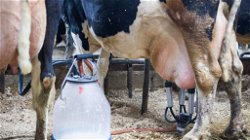Global Food Security: Innovative Methods to Preserve Life
Ronit Agarwal
. 3 min read
Global food security is a pressing issue that affects millions of people worldwide, particularly in developing countries. Ensuring access to nutritious food is crucial for human survival and well-being, and requires innovative methods to overcome the complex challenges that impede food security. One approach is to preserve food, which can help to extend the shelf life of perishable items, reduce waste, and ensure that food is available even during times of scarcity. By adopting innovative approaches, such as food preservation techniques and online chat platforms, and addressing the underlying causes of food insecurity, we can work towards a more secure and sustainable global food system.

Safety of Food Supplies
Food security is both the availability of food and an individual's ability to get their hands on it. When the people living in a household do not experience hunger or the fear of going hungry, we say that the household is food secure. According to the World Resources Institute, over the course of the last few decades, the amount of food that is produced on a global scale per person has significantly increased.
Lessen the Amount of Wasted Food
Food is thrown away for a variety of reasons, the majority of which have to do with inefficient food preparation, poor road conditions, customers who are too picky, and inadequate storage facilities. There will be less food waste in the community as a result of better storage facilities and adequate preparations for how the food will be utilized, which will lead to a greater degree of food security for the community.
Maintain a Healthy Balance Between Food and Nutritional Safety
The obvious solution to the problem of malnutrition is to strike a better balance between the research and development of staple crops and horticultural crops like fruit, legumes, and vegetables. This will help alleviate malnutrition. In many cases, local varieties of fruit and vegetables that are not widely consumed or are underutilized offer an excellent source of nutrition.
1. We need to provide assistance to farmers so that they can cultivate new varieties of plants and different combinations of crop types.
2. In addition to being excellent sources of protein, vitamins, and fatty acids, animals, fish, and poultry are also good sources of fat.
3. The development of a private seed industry that is more diverse and competitive, as well as efforts to help farmers improve the health of their soil through capacity building.
Building Resilience: The Urgent Need for Safety Nets in the World's Poorest Communities
In addition to providing urgent funding for humanitarian efforts, we have a responsibility to provide the safety nets that the world's poorest communities, including those in sub-Saharan Africa and the Middle East, require in order to make it through this crisis. This includes providing debt relief, cash transfer programs, increased support to smallholder farmers, including access to credit schemes, markets, and nutritious food investing in rural infrastructure and providing a significant package of support to the world's most vulnerable nations to assist them in adapting to climate change and strengthening their ability to withstand its effects.
Schooling and Reading Comprehension
It is well established that education plays an important role in improving farm efficiency and the adoption of new technology. As a result of agriculture's transformation from a subsistence level to a commercial level, farmers are looking for information on a wide variety of topics in order to increase their knowledge, as well as their skills and capacity for business. Literacy is emerging as an important source of growth in the adoption of technology as well as the use of modern inputs such as fertilizers and machines.
Crop Diversification
Diversifying crop production has the potential to contribute to the much-needed improvement of global nutrition. Even before the pandemic made it harder for people to make a living and keep their homes, nearly 3 billion people around the world lacked access to diets that were healthy. According to Patrick Webb, professor of nutrition at Tufts University and director of the Feed the Future Nutrition Innovation Lab at the United States Agency for International Development.
Conclusion
Feed the Future Innovation Lab for Nutrition, diversifying crops can help to address this issue by increasing the availability of nutrient-rich foods. This includes promoting the cultivation of a variety of fruits, vegetables, grains, and legumes, as well as incorporating livestock and fish farming into agricultural systems. By diversifying crops, farmers can also improve soil health and reduce the risk of crop failure due to climate-related events such as droughts or floods. We can ensure that everyone has access to the nutritious food they need to survive and thrive.
More Stories from
Dairy Farming: Environment Impact & Challenges
This article discusses the impact of dairy farming on the environment, including air pollution, deforestation, and emissions from milk production facilities.
Erosion of Beaches: Human Contributing Factors
Rocks, soils, and sands that are located along the coast can be worn away or carried away by the process known as coastal erosion.
Unveiling India's Volcanic Secrets: A Geological Overview
Explore India's unique volcanic history and the enduring forces of nature that continue to captivate scientists and adventurers alike.
Zero-Waste Living: Practical Tips for Reducing Environmental Impact
Discover the power of zero-waste living as this article offers practical tips and actionable advice for reducing your environmental impact.
Eco-Friendly Practices: How Individuals and Businesses Can Make a Difference
Discover the Power of Eco-Friendly Practices: Learn how individuals and businesses can contribute to a greener world by adopting sustainable measures.










.png?width=40&aspect_ratio=1:1)


.png?width=40&aspect_ratio=1:1)